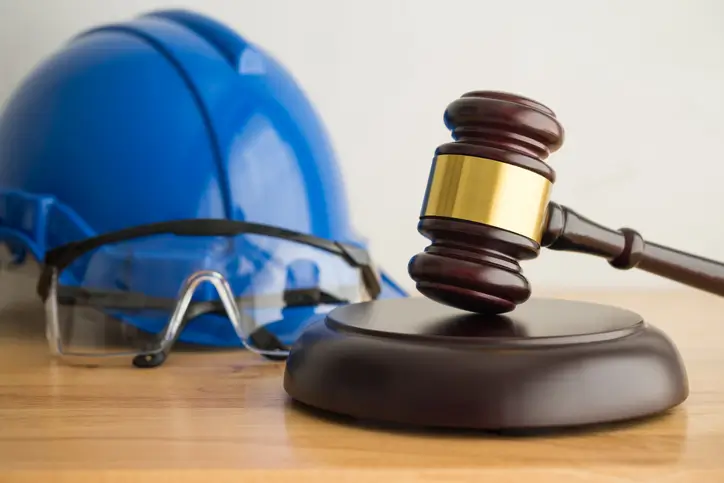EHS Practice Test
EHS Practice Test: Quiz Questions and Answers
Environmental Health and Safety (EHS) training is of immense importance for maintaining a safe workplace. Our EHS courses help you stay compliant with key safety regulations and prepare for various EHS certification exams. During your course, you’ll encounter quizzes after each module, and at the end, a comprehensive EHS exam to ensure you’re fully prepared. If you’re feeling uncertain about the exam, you can find practice tests online, including some examples below!
When studying for an EHS exam, be mindful of the specific regulatory guidelines that apply to your industry. Questions on chemical handling, fire safety, lab protocols, and emergency response procedures can differ depending on your environment. Below, we’ve compiled sample questions focusing on general EHS standards, particularly for laboratory safety. After answering, you’ll find explanations for each question to help you better understand the reasoning.
EHS Practice Quiz
1.) Who issues a New York City laboratory permit?
- Department of Environmental Protection (DEP)
- Department of Environmental Conservation (DEC)
- Occupational Safety and Health Administration (OSHA)
- Fire Department of New York (FDNY) Fire Commissioner
2.) According to the FDNY, how many lab-type classifications are there?
- 2
- 1
- 4
- 5
3.) A “type II” laboratory includes all of the following features EXCEPT:
- 25 gallons of flammable material
- Sprinklers
- 2-hour fire-rated construction
- 40 lbs. of oxidizing material
4.) In a lab, smoking is permitted in designated areas.
- True
- False
5.) A “type I” laboratory has the following characteristics:
- Permitted to have 35 gallons of flammable material
- Rated for 2 hours
- 15 lbs. of flammable solids
- Sprinklers
- All but the first choice are correct
6.) All of the following are flammable materials, with the exception of:
- Methanol
- Nitric Acid
- Acetone
- Ethanol
7.) Chemical hoods must be vented at an average of what minimum face velocity according to FDNY standards?
- 200 ft/min
- 75 ft/min
- 150 ft/min
- 100 ft/min
8.) When mixing acid and water, generally, the acid is added to the water.
- True
- False
9.) Emergency safety showers must be located within what proximity according to FDNY standards?
- 30 feet
- 25 feet
- 20 feet
- 10 feet
10.) Flammable liquids must not be stored in a refrigerator at any time.
- True, unless the refrigerator is flammable or explosion-proof
- False
11.) Gas cylinders must:
- Be properly secured at all times
- Not block any means of egress
- Pass a hydrostatic test every 10 years
- Not be stored below grade if they contain flammable gases
- All of the above
12.) Class B fires must be extinguished with:
- A water-type fire extinguisher
- A CO2 fire extinguisher only
- A CO2, dry chemical, or foam extinguisher
13.) In the event of a fire, what steps should you take (in chronological order)?
- Call the department chair, evacuate, contact Environmental Health and Safety (EHS), put out the fire, and activate the nearest pull station.
- Activate the nearest pull station, evacuate, and contact EHS only
- Contact EHS, activate the nearest pull station, put out the fire
- Scream “fire,” call your boss, and evacuate
14.) Which agency sets the regulations for lab safety in New York City?
- Occupational Safety and Health Administration (OSHA)
- Fire Department of New York (FDNY)
- National Fire Protection Association (NFPA)
- Department of Environmental Conservation (DEC)
15.) Which safety procedure is essential when handling flammable liquids?
- Always work under a fume hood.
- Never store them near oxidizers.
- Only handle them in approved safety containers
- All of the above
EHS Test Answer Key and Explanations
1.) FDNY Fire Commissioner
Explanation: In New York City, the Fire Department (FDNY) issues laboratory permits through its Fire Commissioner. The FDNY regulates lab safety, including fire hazards, storage of hazardous materials, and emergency preparedness.
2.) 4
Explanation: According to the FDNY, there are four lab-type classifications based on the amount and type of hazardous materials present. These classifications help determine what safety measures must be in place.
3.) 40 lbs. of oxidizing material
Explanation: A “type II” laboratory includes 25 gallons of flammable materials, sprinklers, and 2-hour fire-rated construction. However, the limit for oxidizing material is lower than 40 lbs.
4.) False
Explanation: Smoking is prohibited in all laboratory areas to prevent the risk of fire and explosions due to the presence of flammable materials and hazardous chemicals.
5.) All but the first choices are correct.
Explanation: A “type I” laboratory allows for fewer hazardous materials than a “type II” lab. It includes a 2-hour fire rating, 15 lbs. of flammable solids, and sprinklers, but is not permitted to store 35 gallons of flammable material.
6.) Nitric Acid
Explanation: While methanol, acetone, and ethanol are all flammable, nitric acid is not. Instead, it is a strong oxidizer and highly reactive.
7.) 100 ft/min
Explanation: FDNY standards require chemical hoods to be vented at a minimum face velocity of 100 ft/min to ensure proper airflow and reduce exposure to hazardous fumes.
8.) True
Explanation: When mixing acids and water, you should always add the acid to the water to avoid violent reactions. Adding water to acid can cause dangerous splashing and heat.
9.) 10 feet
Explanation: FDNY mandates that emergency safety showers must be within 10 feet of potential chemical exposure areas to provide immediate decontamination.
10.) True, unless the refrigerator is flammable or explosion-proof
Explanation: Flammable liquids can only be stored in specially designed flammable or explosion-proof refrigerators to prevent ignition from electrical components inside the fridge.
11.) All of the above
Explanation: Gas cylinders must always be secured, never block egress, pass hydrostatic testing, and be stored above ground if containing flammable gases, according to FDNY safety standards.
12.) A CO2, dry chemical, or foam extinguisher
Explanation: Class B fires, which involve flammable liquids, should be extinguished using CO2, dry chemicals, or foam extinguishers – never water.
13.) Activate the nearest pull station, evacuate, and contact EHS only
Explanation: In case of a fire, your first action should be to activate the nearest pull station to alert others. Evacuation is the next priority, followed by contacting EHS.
14.) Fire Department of New York (FDNY)
Explanation: In New York City, the FDNY is responsible for regulating lab safety practices, including hazardous material storage, emergency response, and fire prevention measures.
15.) All of the above
Explanation: When handling flammable liquids, it’s essential to work in a fume hood, avoid contact with oxidizers, and use approved safety containers to minimize fire risks and ensure safe handling.
By practicing these questions and reviewing the explanations, you’ll be better prepared for the real EHS certification exams. Remember, safety is a priority, and proper training is the key to a safe working environment!




